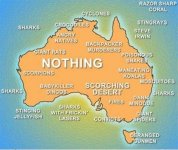Because it is more fun to ride round Australia in a van that says ' muff management', perhaps?
And here I though I would mention something actually about esoteric audio. My current project is a feedback eliminator that is not an adaptive filter. Looks like my next one will be a stereo to mono adapter that does use adaptive methods.
That should get some confused heads spinning.
That should get some confused heads spinning.
Because it is more fun to ride round Australia in a van that says ' muff management', perhaps?
In that case, I recommend a ute rental and visits to B&S balls.
(Sydney to Perth touring would become an unlikely target though)
You sure you wanna go there? 😀My dream to spend a year touring through the land of Oz.
Attachments
This is a good way to travel if you accept the invitation.
https://www.youtube.com/watch?v=UfSOumv-QQ4
https://www.youtube.com/watch?v=UfSOumv-QQ4
Hello Scott, You have AD630, why do you need SR?Hi Ed,
I requisitioned a Stanford Research lock in amplifier and put it in my office, so please repeat that noise measurement that you want to verify.
Clever (as usual).Hello Scott, You have AD630, why do you need SR?
Hello Scott, You have AD630, why do you need SR?
Not quite that easy, and anyway they pack their gear with AD797's. 😛
Not quite that easy, and anyway they pack their gear with AD797's.
ok, probably nostalgia. Would you like to double check ES's cable measurements? 😀
ok, probably nostalgia. Would you like to double check ES's cable measurements? 😀
Actually rebuilding my original toy has brought up an interesting issue. When you tried it how did you sum the two oscillators? I presume you used a resistive sum design using good metal film resistors.
ok, probably nostalgia. Would you like to double check ES's cable measurements? 😀
No thanks, not until the hypothesis is stated clearly (no 20 questions) with the references from the physics literature that supposedly exist.
When you tried it how did you sum the two oscillators? I presume you used a resistive sum design using good metal film resistors.
No Simon, I used ITU-R (CCIF) IMD tone from AP, and I used JT-44K-DX in front of PAR 113 and AP.
No thanks
Why Scott, you can reach
resolution with this setup.200dB
No Simon, I used ITU-R (CCIF) IMD tone from AP, and I used JT-44K-DX in front of PAR 113 and AP.
Looks good, results? That PAR 113 looks like 7nV or so at 1k from their graph, one of the 1nV in-amps now available might make more sense.
I replaced 2N5521 input pair with LSK389C in TO-71, so it is 3nV nowThat PAR 113 looks like 7nV or so at 1k from their graph
Oh yes, very good, no PIMD 😉Looks good, results?
@Scott - playing with ADI's Analog Discovery module, I love the Network Analyzez, already let me improve my paX amp stability big time! And for just $ 150!
Jan
Jan
@Scott - playing with ADI's Analog Discovery module, I love the Network Analyzez, already let me improve my paX amp stability big time! And for just $ 150!
Jan
Good, I have two and keep one on the bench at work. Beats programming a GPIB instrument for quick automated measurements. BTW there is a new educational tool that is only $40, someone wrote a cute little spectrum analyzer for it. http://wiki.analog.com/university/tools/alice-sa-1.0-users-guide
Last edited:
@Scott - playing with ADI's Analog Discovery module, I love the Network Analyzez, already let me improve my paX amp stability big time! And for just $ 150!
Jan
Here the link to the module
http://www.digilentinc.com/data/products/analog-discovery/AnalogDiscovery.pdf
BTW Found a fascinating patent from Daniel More from 1984 on virtual ground phono preamps. Very interesting read. US Pat 4,470,020.
Jan
Jan
- Status
- Not open for further replies.
- Home
- Member Areas
- The Lounge
- John Curl's Blowtorch preamplifier part II


